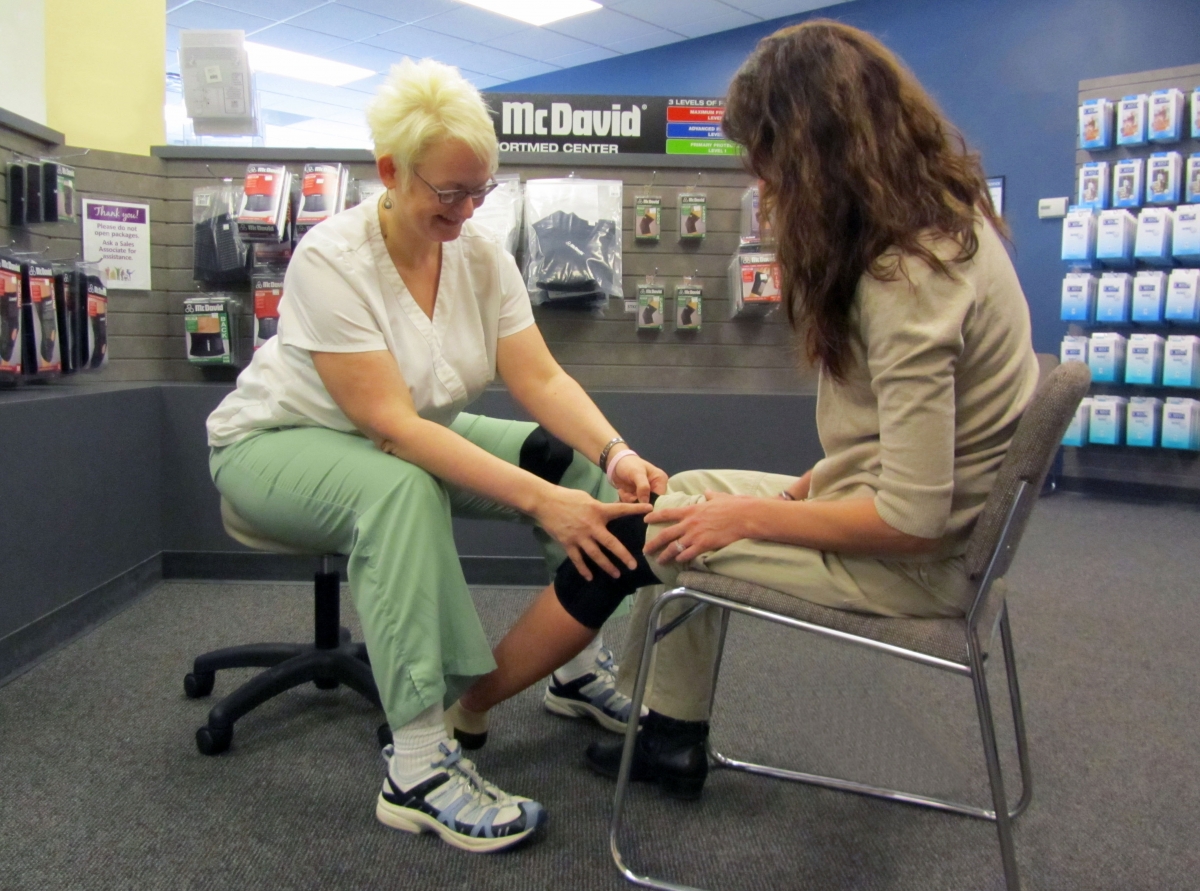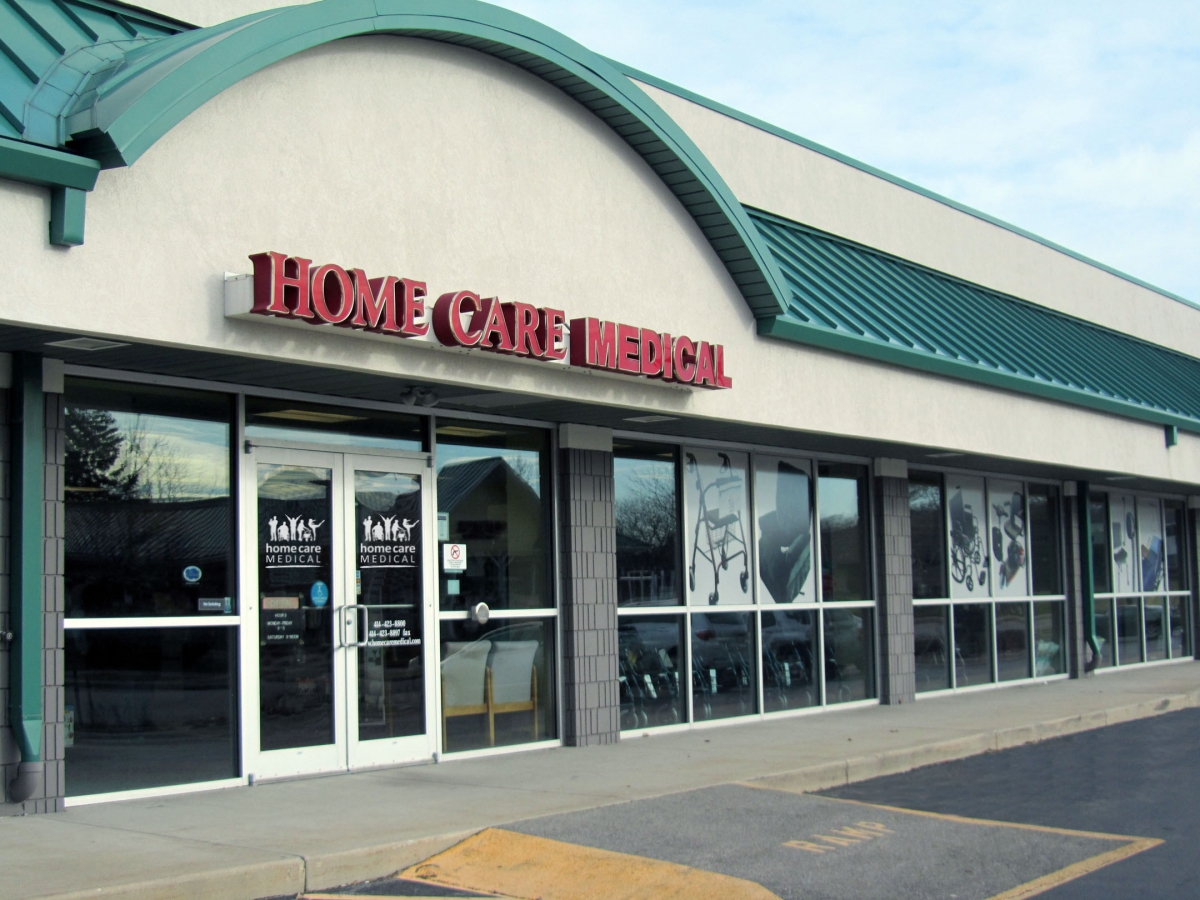 If customers and referral sources ever wonder what New Berlin, Wis.-based Home Care Medical is all about, all they have to do is check the company’s website.
If customers and referral sources ever wonder what New Berlin, Wis.-based Home Care Medical is all about, all they have to do is check the company’s website.
“Our mission is to enhance the quality of life of those we serve,” the company proclaims at the top of the home page.“Our values are respect, integrity, dependability and excellence,” reads the banner on another page.
That mission and those values have been the guiding forces since 1974, when Home Care Medical began providing home medical equipment to residents of southeastern Wisconsin. And even if the industry has changed radically from the early days when 50-pound concentrators were the norm and elephant-trunk CPAPs were yet to come, the mission and the values have remained.
Indeed, they have been the true north as Home Care Medical has adroitly adapted to the scary new world of HME.
“We have looked at our core competencies, and our core competencies are not delivering product in a truck or submitting a clean claim,” said John Teevan, president of Home Care Medical. “They are about giving great care to people on a 24/7 basis, simply fulfilling our mission and vision statements.”
 The company is keen on remaining a full-line HME provider “focused on our core competencies by doing the right business with the right partners,” he added.
The company is keen on remaining a full-line HME provider “focused on our core competencies by doing the right business with the right partners,” he added.
That philosophy has underscored Home Care Medical’s growth from a family-run company focused on durable medical equipment and respiratory to a full-line HME provider that employs about 180 people serving residents in 15 counties. It has a large corporate location in suburban Milwaukee, two retail locations, four PAP-fitting locations and 125 consignment closets. It is the contracted preferred provider for three of the area’s five health care systems, two of which have a minority ownership in the company, and it has staff in four hospitals.
“It’s been a good, long 38-year history coming up in May,” Teevan said.
So how did Home Care Medical get to this place and where does it go from here?
Foreseeing the future
Teevan started in the business as a high-school student lugging 50-pound concentrators into customers’ homes. He didn’t need a crystal ball to tell him several years ago that the HME world was on the cusp of radical change.
During his career, he’s worked to stay on top of industry issues by staying active in the Wisconsin Association of Medical Equipment Services, the MED Group and the American Association for Homecare. He gets together on a regular basis with HME veterans to talk shop and strategies.
“One of the things we knew was that competitive bidding was going to be here,” he said. “It was not a matter of if; it was clearly a when issue. We took some pretty dramatic action.”
Teevan and his team put together a strategic plan that continues to operate today.
“We reorganized the internal structure into four teams, each with a vice president, (for) a higher degree of creativity and accountability. The four teams are pushed close enough together so as not to exist as four silos, but as one whole,” Teevan said.
For example, the four teams are demand, supply, clinical and support. On a spreadsheet, they would be vertical columns, he explained. Horizontal columns would be quality assurance, performance assurance, business development and accreditation, and they would touch every team.

“Those four teams were designed as element number one in preparing for competitive bidding,” Teevan said. “The second element was new software. We needed new software that could grow and change as the company and industry did.” In 2008, Home Care Medical invested in new software.
“The third thing we did was to hire consultants to perform process improvement (evaluations) for the company.”
That has paid off well for Home Care Medical, according to Teevan. While the company has grown 20 percent in the last four years, the staff has only increased by 10, from 170 to 180.
“The fourth and last thing we did to prepare was to organize our revenue efforts into five lines of business,” he said, citing home infusion and specialized nutrition; rehab technology; respiratory care; HME and supplies and bracing and compression garments.
“We needed to really segregate each line of business.”
Every line of business was heavily scrutinized. In the end, Teevan said, “we did not jettison any of them. But we definitely put more energy behind certain elements of each team. We emphasized some areas, but de-emphasized others.”
He used enteral therapy as an example. The company decided to emphasize Medicare and ratchet down pediatric Medicaid enteral.
“Within the world of respiratory care, we emphasized oxygen, PAP and ventilators and de-emphasized nebulizers, phototherapy and apnea monitoring,” he said. “The only area where we de-emphasized just about everything was in the area of medical supplies. We do it on a drop-ship or retail basis, and only when we are required by contracts we hold or if the mark-up is decent. We aligned it with what we had to do, and we make sure it is done at neutral or plus margins.”
That has meant dropping some brands that were too expensive, he said, but they are still able to serve their customers more than adequately.
The work didn’t end there.
Building a better business
Even with reorganization, the streamlined processes and the product re-emphases, Teevan said he believed there was more Home Care Medical could do to cement its future against the impact of competitive bidding.
“We decided to stop whining and do something,” he said, adding that the company still worked to stop the Medicare program. “We figured some form of big cuts were coming our way and we needed to prepare for it.”
The company focused on the three “Rs”—retail, rehab and respiratory. It hired new fitters for bracing and compression, invested in some pin-dot seating computers to enhance its rehab sector and implemented a short-term rental program for ramps, scooters and motorized wheelchairs.

“We got creative looking for those areas that could build volume creatively, as well as the margins,” Teevan said, “because margins were drastically cut last year. A big thrust is to build the volume to absorb the direct costs we have as a corporation. Obviously, we are looking for cash-only and retail products.
“We’ve also had a spotlight on the hospice industry here,” he continued. “We currently hold 13 hospice agreements—some capitation, some fee for service. So we have gone after traditional DME, active people, baby boomers, athletes. We just took on a new line with an NBA player (Charlotte Bobcat Corey Maggette, who represents the McDavid sports medical products line). We are working with sport trainers, and physical trainers at the various high schools.”
The latter now turned to Home Care Medical for such things as bandages, over-the-counter braces and even some higher-end products—and most are available in the schools’ colors.
“We do reach out to our athletes,’’ Teevan said. “It drives traffic for when they need us in later years.”
Overall, Teevan said, “I think the spotlight would be respiratory, rehab and clinical pharmacy or infusion therapy. Those are the big areas in terms of volume and margin and future.”
Just about everything else, he said, is carried so Home Care Medical can honor its contracts.
Back to the future
So what has all this strategic planning, and reorganization meant to Home Care Medical?
It has not meant complacency.
Teevan said gross revenue is stable, but “net revenue, after you take out the contractual discounts, has become less stable. So we have to look for more volume at the revenue line that has less-to-no discounts. We need more of it to handle the infrastructure. We are looking to lean down.”
One way of paring off any fat, for example, is to transfer two-thirds of billing activities to a medical billing company, a move Home Care Medical made on March 1.
Teevan does not refer to this practice as outsourcing. “We are calling it internal redeployment,” he said, noting that staff that once handled billing has been redeployed to doing verification on the front end and handling all the processes required by contractual companies.
Teevan is also paying attention to where the company’s growth is coming from, and much of that has been through commercial payers and nontraditional sectors, including hospice, institutional and “honestly, Wisconsin Medicaid, which is a fair program.”
The company has also developed relationships with Medicare HMOs, even as it has sliced away at its dependence on traditional Medicare. “We are now at about 24 percent Medicare,” Teevan said. He noted that a large territory covered by Home Care Medical will not be affected in 2013, when Round 2 rates go into effect. “So our exposure under Round 2 … is somewhat minimized.”
Whatever the outcome of Home Care Medical’s bids in seven or eight categories, he is prepared.
“We are assuming it is going to be awful,” Teevan said. “We are going to plan for the worst and (hope for) the best. We are not going out looking for new products or new lines of business or new areas to serve with Medicare products. We are looking everywhere else but there.”
Like many in the HME business, Teevan is especially looking to build his retail sector.
After more than three decades in the business, Teevan can say that competitive bidding is the biggest challenge HME providers have ever faced—and not only because of the expected drastically lowered reimbursement.
“The final preps for it—doing more (as a leaner company), communicating with doctors, with patients, with referral sources. It’s preparing for competitive bidding in all of its various forms, financial, care and coordination.”
He has no confidence that the Office of Medicare & Medicaid Services will handle any of that communication to doctors, patients and referral coordinators. So Home Care Medical is preparing its own mailing to inform them, he said.
It’s a harbinger of the future, he believes. Teevan foresees a smaller industry, and the “rationing of care to some degree, whether that takes the form of ‘we only do deliveries in those areas on these days’ or encouraging nonMedicare people to pick things up or do drop-ship or product formularies. We have formularies across the board and they keep getting narrow and narrower, so the product selection will be less. We can’t be everything with everything to everybody at the rate rates are going down.”
He said it saddens him that Medicare seems intent on taking the humanity out of the industry.
“The government is set on making the industry what it has long said it was—product jockeys,” he said. “I’m somewhere between optimistic that we will be able to figure out a way of still providing the best care in the area, and pessimistic that if Round 2 rates pass over to Medicaid and to (other) payers, there won’t be any reason left to innovate and grow.”
However it shakes out, Teevan said he knows one thing for sure: There will always be customers for whom Home Care Medical can make a difference.





